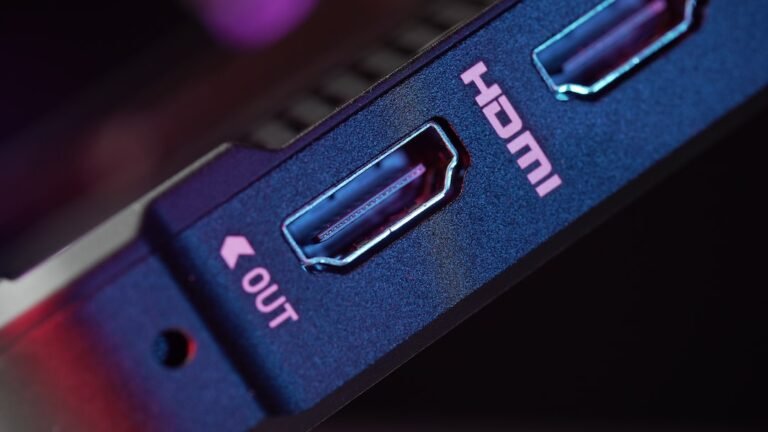Introduction
In today’s digital age, the online world has become an integral part of our lives. From education and entertainment to socializing and communication, the internet offers endless possibilities and opportunities. However, while the internet can be a valuable resource, it also comes with risks, especially for vulnerable individuals such as children with disabilities.
As parents, caregivers, and educators, it is our responsibility to ensure that children with disabilities have a safe online environment where they can explore, learn, and socialize without facing unnecessary dangers. One of the most effective ways to achieve this is by using parental control routers. In this article, we will delve into the importance of parental control routers and how they can enhance online safety for children with disabilities.
What Are Parental Control Routers?
Before we dive into the benefits and features of parental control routers, let’s first understand what they are. A parental control router is a device that allows you to manage and control the internet access of devices connected to your home network. It provides you with a range of tools and settings to regulate and monitor the online activities of your children.
Parental control routers offer a wide array of features such as content filtering, time restrictions, and device-specific controls. They enable you to set limits on the type of content your children can access, the amount of time they spend online, and even the specific websites they can visit. By utilizing these features, parents can create a safe and secure online environment for their children.
The Importance of Online Safety for Children with Disabilities
Children with disabilities often face unique challenges when it comes to online safety. They may be more vulnerable to cyberbullying, online predators, and exposure to inappropriate content. Additionally, they may struggle with understanding the nuances of online interactions and distinguishing between reliable and unreliable sources of information.
Enhancing online safety for children with disabilities is crucial for several reasons. Firstly, online experiences can greatly impact their emotional and psychological well-being. Negative experiences can lead to decreased self-esteem, anxiety, and increased isolation. Secondly, the internet plays a fundamental role in their education and socialization. Ensuring a safe online environment empowers children with disabilities to explore their interests, connect with others, and access educational resources without unnecessary risks.
How Parental Control Routers Enhance Online Safety
Now that we understand the significance of online safety for children with disabilities, let’s explore how parental control routers can enhance their safety and well-being.
Content Filtering
One of the key features of parental control routers is content filtering. This feature allows parents to block access to websites that are deemed inappropriate or unsafe. By creating a whitelist or blacklist of websites, parents can ensure that their children are shielded from explicit content, violence, and other harmful online material.
For children with disabilities, who may struggle with impulse control or distinguishing between appropriate and inappropriate content, content filtering becomes even more critical. Parental control routers give parents peace of mind, knowing that their children are only accessing age-appropriate and safe online content.
Time Restrictions
Another important aspect of online safety is managing the amount of time spent online. Excessive screen time can negatively impact children’s physical health, mental well-being, and overall development. Parental control routers offer time restriction features, allowing parents to set limits on the duration of internet access.
For children with disabilities, who may struggle with self-regulation or have difficulty transitioning from online to offline activities, time restrictions can be especially beneficial. By setting boundaries and promoting healthier screen time habits, parents can ensure that their children have a well-rounded and balanced lifestyle.
Device-Specific Controls
Parental control routers also provide device-specific controls, enabling parents to have individualized settings for each device connected to the network. This means that parents can customize the level of internet access, content filtering, and time restrictions for each child based on their specific needs and age.
For instance, a child with autism may require additional restrictions to prevent them from accessing certain online platforms or websites that can trigger anxiety or confusion. A parental control router allows parents to tailor the online experience to meet the unique needs of their children with disabilities.
Monitoring and Reporting
In addition to filtering content and setting time restrictions, parental control routers offer monitoring and reporting capabilities. Parents can monitor their children’s online activities in real-time and track their browsing history. Some routers even provide detailed reports that highlight which websites were visited and for how long.
This monitoring feature is particularly valuable for parents of children with disabilities. It allows them to identify any potential red flags, such as cyberbullying or interactions with strangers online. By staying informed about their children’s online behavior, parents can promptly address any concerns and establish open lines of communication regarding online safety.
Conclusion
Enhancing online safety for children with disabilities is of utmost importance in today’s digital world. Parental control routers provide essential tools and features that enable parents to create a safe online environment for their children. From content filtering and time restrictions to device-specific controls and monitoring capabilities, these routers empower parents to protect their children and promote responsible online behavior.
By combining the power of technology and proactive parenting, we can ensure that children with disabilities can navigate the online world safely and enjoy the numerous benefits it has to offer.
FAQ
How can I set up a home network to ensure online safety for my child with disabilities?
Setting up a home network that prioritizes online safety for children with disabilities can be done in a few simple steps:
- Choose a robust parental control router that offers a range of features such as content filtering, time restrictions, and monitoring capabilities.
- Follow the manufacturer’s instructions to install and configure the parental control router on your home network.
- Customize the settings to meet the unique needs of your child with disabilities, such as setting content filters and time limits.
- Educate your child about online safety, establish rules for internet usage, and encourage open communication about their online experiences.
For a more detailed guide on home network setup, you can check out our article on home network setup.
What should I do if I encounter issues with my router or the parental control settings?
If you encounter any issues with your router or parental control settings, there are a few troubleshooting steps you can try:
- Restart the router and ensure that it is functioning properly.
- Double-check the parental control settings and make sure they are configured correctly.
- Update the router’s firmware to the latest version to ensure optimal performance and security.
- Consult the manufacturer’s documentation or support resources for specific troubleshooting steps.
If the issues persist, you may need to reach out to the manufacturer’s customer support or consult a professional for further assistance. For more information on router troubleshooting, you can refer to our article on router troubleshooting.
Can you recommend any other resources on online safety and parenting?
Certainly! Here are a few websites that provide valuable information and resources on online safety for children and parenting:
| Website | Description |
|---|---|
| Safer Internet Centre | A comprehensive resource center for online safety, providing tips and advice. |
| Childnet International | Offers guidance on a range of online safety topics, including social media use. |
| National Online Safety | Provides online safety education and resources for parents, schools, and children. |
| Family Online Safety Institute (FOSI) | A non-profit organization focused on promoting online safety for families. |
For more detailed information and comprehensive guides on various parenting topics, you may explore other reputable sources such as parenting blogs, research studies, and books.
Further Reading
For more information on related topics, here are a few external resources you may find helpful:
| Website | Description |
|---|---|
| Wired – Mesh Wi-Fi Systems | An article discussing the benefits and features of mesh Wi-Fi systems for home networks. |
| PCMag – The Best 5G Routers for High-Speed Internet Connectivity | A guide to selecting the best 5G routers for fast and reliable internet connectivity. |




